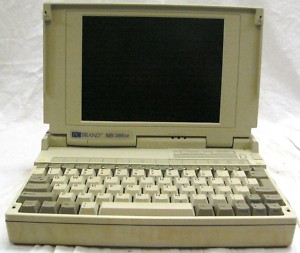 What if Amazon’s new Kindle Fire, priced at $199 and using a sub $10 TI processor, has effectively started the ball rolling towards forcing Intel and AMD to building a Very Low Cost (perhaps even <$10) x86 mobile processor? A recent article entitled “Amazon’s Risky Strategy” explores the ramifications of Amazon selling Kindle Fires at a loss in order to get eyeballs stuck on Amazon’s web pages for longer and thereby increasing sales. The article goes on to speculate that Amazon will sell a Smartphone in the future to further its strategy. Amazon’s sub $200 subsidized hardware model may be like a magnet pulling mobile PC’s into its price range which would have an impact on x86 CPU features, power and price.
What if Amazon’s new Kindle Fire, priced at $199 and using a sub $10 TI processor, has effectively started the ball rolling towards forcing Intel and AMD to building a Very Low Cost (perhaps even <$10) x86 mobile processor? A recent article entitled “Amazon’s Risky Strategy” explores the ramifications of Amazon selling Kindle Fires at a loss in order to get eyeballs stuck on Amazon’s web pages for longer and thereby increasing sales. The article goes on to speculate that Amazon will sell a Smartphone in the future to further its strategy. Amazon’s sub $200 subsidized hardware model may be like a magnet pulling mobile PC’s into its price range which would have an impact on x86 CPU features, power and price.
Believe it or not, the original 8088 through the 286 were sold at prices that got down below $10 in 1990. The CPU was a minor percentage of the overall PC cost as IBM, Compaq, and others reaped margins that are to dream of today, even higher than Apple’s current margins.
In the summer of 1990, I recall being in a meeting at Intel with representatives of Sharp’s LCD division. They were showing off the first color LCD for notebook PCs. It was a 10” diagonal but one inch thick – only three working samples existed in the world. We asked what they expected to get for it when it was in volume production. They said $2,000. But first they were going to demo it in their own notebook at Comdex in November 1990. They did and it was a hit. Compaq, then the leader in mobiles had just unveiled the first notebook PC with a 10” monochrome screen and a 386SX processor for $5999. It seemed like the tables were turning towards Sharp. Nine months later the story ended as Sharp couldn’t ramp the color LCD in any appreciable volume. They were too early.

In the above example, the 386 SX was perhaps $60 out of a total system price of $6000, or just 1%. Intel discovered in the 1990’s that if they could stoke a little competition between PC manufacturers that it could raise CPU ASPs while system prices dropped. Eventually the CPU as a percentage of the end system price would rise to 10-20%. The CPU is the computer. The rise of the Smartphones and tablets has now put a big question mark on the CPU price model. With the Kindle Fire we have a sustainable razor/razorblade business model that will force all “Consumer” based processors to be not just downsized but right-sized. AMD and Intel are not there today.
As many of you know the price driver of x86 CPUs in the 1990’s was MHz as PCs attempted to catch up with the demands of the bloated Microsoft O/S and Office applications. Yes, you can throw Adobe in there as a guilty party as well. But recently, in a meeting over coffee with an Apple engineer, I was shown that the kernel of the iOS occupies only 360MB of the iPhone’s 512MB of memory. Pretty lightweight – can I say “DOS like”? Low-end notebooks typically have 2GB to 4GB and Microsoft promises to lighten up Windows 8. It is their way of enabling ARM processors. The bottom line is that x86 processors have to imagine a world where they will be sitting idle or barely running most of the time. What does this mean in terms of features and architecture?
As mentioned in a previous blog, the rise of 10” LCD based netbooks in the downturn of 2008-2009 was based purely on a minimalists need in the midst of an Economic Depression. Their following downfall was not based on the much higher cost Apple iPAD but due to the fact that 14” LCDs had cratered in price. Expect Moore’s Law to continue pushing LCDs down in price. In addition, trends are in place for SSDs to do a number on HDDs, then the game gets interesting. Small formfactor, power-sipping SSDs naturally force other components to come out of their shadows and face their re-architecting. More specifically, the push will be on to reduce enclosure costs, battery capacities, power supply infrastructure, and the processor cooling overhead. All of these can go on a diet once the processor is redesigned for “coolness”.
If AMD or Intel offers a $10 -$20 processor + graphics (APU in AMD terminology) that reduces both Thermal Design Power (TDP) to <5W while consuming much lower power (especially in standby), then the OEM can move consumer PCs towards the Amazon Kindle Fire price. The top speed would be closer to 1Ghz. We would also see smaller on chip caches but a more robust graphics core. Obviously Microsoft has a role here in reducing costs. But this should be part of their grand Cloud strategy.
The net-net of it all is the x86 processor gets to return to its price and power roots of the 1980’s but at a higher 5-10% of end system price. I believe Intel and AMD see this, but the cost structures of both companies are built around a much higher ASP model. Given AMD’s current situation, it is likely that they will make the jump first. In either case, ARM suppliers like nVidia, Qualcomm and others with the help of Microsoft and Google are already working on carving out an increasing portion of mobiles under $299 in a profitable manner. This by the way is what Jen Hsun Huang is referring to when he says “Clamshell” devices on Windows 8, a sub category to a Full, legacy compatible mobile PC.
FULL DISCLOSURE: I am Long AAPL and INTC










Quantum Computing Technologies and Challenges